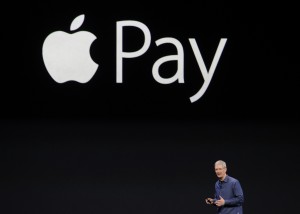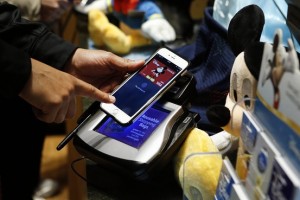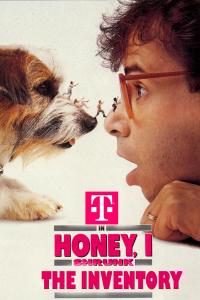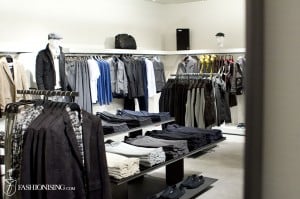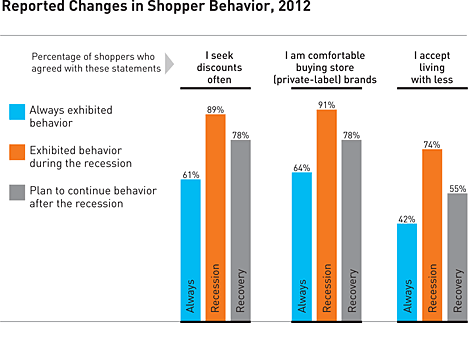Cash, credit card or apple pay, are you ready to ditch your wallet?
When CEO Tim Cook announced Apple’s digital wallet method in early September he didn’t go into great detail about the security aspects of Apple Pay. Although a lot of people may be hesitate on using Apple Pay it turns out Apple Pay is safer to use than ordinary credit cards.
This is how it works, it lets you use and store your credit cards just by scanning your phone. The technology that sends the payment from your phone to the register is called NFC (near field communication) it’s basically an antenna inside your phone that delivers short encrypted radio waves with your payment data. NFC has been around for a while it has been used in Google Wallet, PayPal, and Pay Express.
It’s a lot harder to steal data from NFC because your phone doesn’t give up your credit card number; instead it uses a one-time use code that gets approved by the bank for every transaction. Even if hackers managed to hack their way into a store and grab this payment data its useless to them because a code can only be used once, plus even if someone where to steal your phone you can actually wipe all the credit cards remotely.
Unfortunately not all stores that once accepted mobile payments options are accepting Apple Pay. Stores like CVS and Rite Aid have stopped accepting Apple Pay for two reasons.
- The first being is that they developed their own payment method called CurrentC, it’s designed to one day let you pay at the register without using your credit card. Wal-Mart led the effort to CurrentC along with Target, Bed Bath& Beyond, Dunkin Donuts, Gap, Sears, Shell, Wendy’s and many more have joined it. It’s really no surprise that none of these stores are accepting Apple Pay.
- These stores feel that Apple Pay is giving more power to credit card companies. Every time you swipe your card, retailers have to pay the credit card companies between 1.3 to 3 percent of every transaction. Apple Pay relies on credit card networks so if Apple Pay grows, it would allow Visa and MasterCard to get stronger and the fees would stick around.
Questions:
- Do you think people will find it difficult to put trust in Apple, after the continuous iCloud hacks that have been going on with celebrities?
- Why do you think retailers are so afraid of Apple Pay?
- Do you think it’s okay for stores like CVS and Rite Aid to deny the use of Apple Pay even though these companies can handle the tap to pay technology?
http://blogs.wsj.com/totalreturn/2014/11/04/why-some-merchants-say-no-to-apple-pay/
http://money.cnn.com/2014/10/27/technology/security/apple-pay-cvs-rite-aid/index.html?iid=SF_T_River

